How to maintain sobriety after completing outpatient rehab
A Guide to Sustaining Your Sobriety Journey

Understanding the Path Forward After Outpatient Rehab
Completing outpatient rehab marks a significant milestone in the journey to recovery, but the path to long-term sobriety extends beyond concluding structured treatment. Maintaining sobriety requires strategic planning, ongoing support, lifestyle adjustments, and self-awareness. This article provides comprehensive guidance on how to preserve your sobriety after outpatient rehab, highlighting essential tactics, community resources, and personal development tools to help you succeed in this lifelong commitment.
Understanding the Duration and Scope of Outpatient Rehab

How long can outpatient rehab last?
Outpatient rehab programs vary widely in length, typically ranging from a few weeks to several years. The most common duration is around three months, which provides enough time for individuals to engage in comprehensive therapy, develop coping skills, and establish healthier routines.
However, some individuals may need shorter or longer programs based on their unique needs. For example, those with mild addiction issues might benefit from brief outpatient care, while others with more complex situations might participate in long-term outpatient support.
Different levels of outpatient care such as partial hospitalization and intensive outpatient programs
Outpatient treatment encompasses several levels of care tailored to the severity of addiction and individual circumstances:
| Level of Care | Description | Typical Duration | Intensity and Frequency |
|---|---|---|---|
| Partial Hospitalization Program (PHP) | Provides a highly structured treatment environment during the day, with clients returning home at night. | 4-8 weeks | Several hours daily, 5-7 days a week |
| Intensive Outpatient Program (IOP) | Offers substantial therapy and support but allows clients to maintain daily responsibilities like work or school. | 8-12 weeks | 3-5 days per week, 3-4 hours per day |
| Standard Outpatient Care | Focuses on regular therapy sessions and support groups without intensive daily attendance. | Variable, often ongoing | Weekly individual or group sessions |
These levels are designed to support recovery at different stages, with more intensive programs suited for early recovery or more severe cases.
Factors influencing the duration including severity of addiction and personal circumstances
The length of outpatient rehab is shaped by several factors:
- Severity of addiction: More severe substance use disorders typically require longer treatment to address underlying issues.
- Progress in recovery: A person’s ability to meet recovery milestones can shorten or extend treatment duration.
- Co-occurring mental health conditions: Mental health disorders like depression or anxiety may necessitate extended therapy and support.
- Personal commitments: Work, family, and other responsibilities can influence the type and length of treatment that a person can undertake.
- Support system: Strong personal or community support can facilitate shorter programs, while those lacking such support might need prolonged outpatient care.
Ultimately, outpatient rehab plans are personalized, aiming to balance effective treatment with individual lifestyles to promote lasting sobriety.
Developing a Strong Support System and Supportive Environment
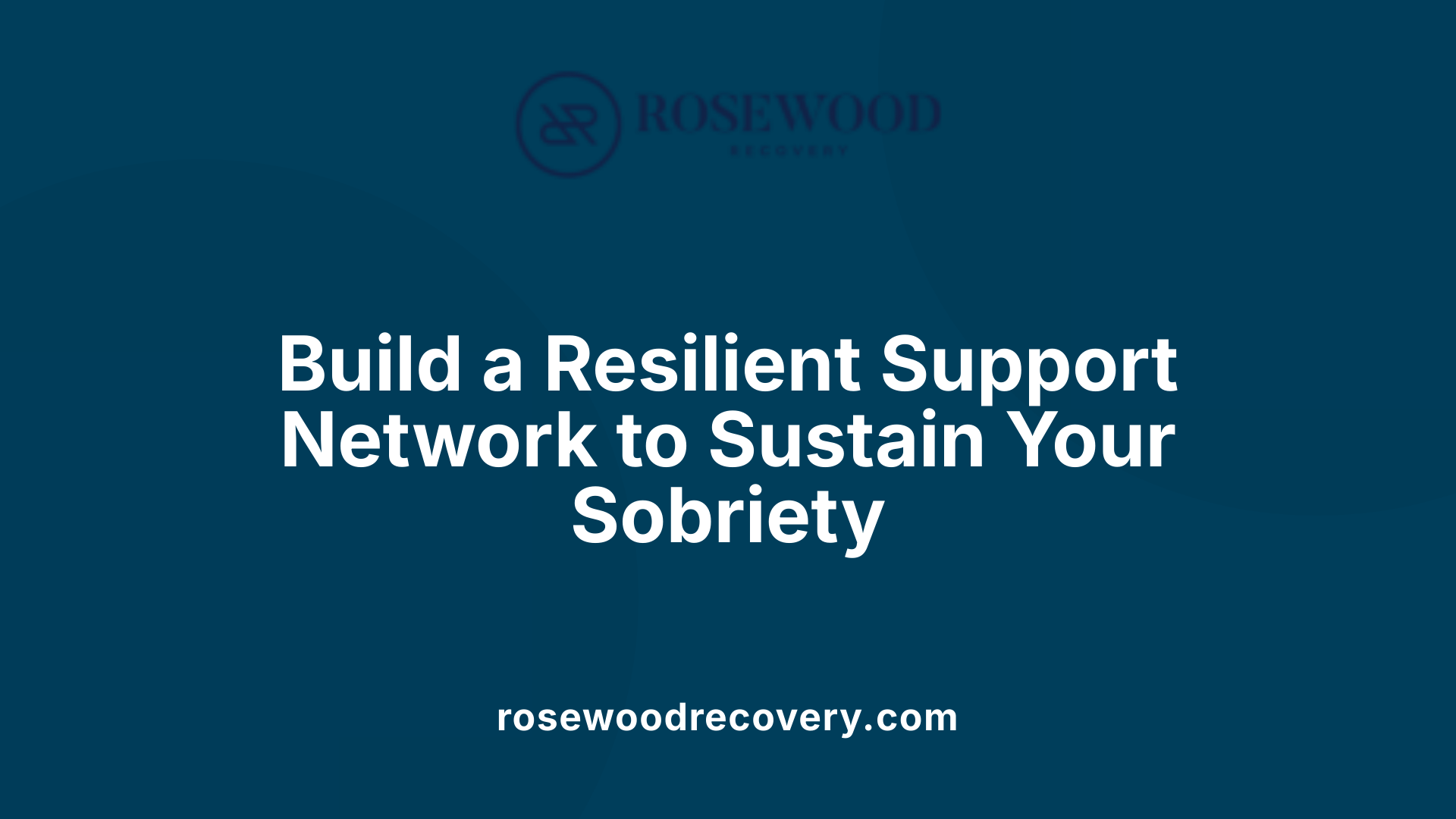
How do you maintain sobriety after treatment?
Maintaining sobriety after treatment is a lifelong journey that involves dedication, healthy habits, and ongoing support. Building a network of sober friends, family members, or sponsors can provide encouragement and accountability. Support groups like Alcoholics Anonymous (AA), Narcotics Anonymous (NA), or SMART Recovery offer community, shared experiences, and emotional backing.
Consistent attendance at support meetings helps reinforce commitment and provides resources during challenging moments. Utilizing services such as SAMHSA’s National Helpline can be a vital step — it offers free, confidential referrals to treatment, support groups, and community-based organizations in English and Spanish.
Creating a structured daily routine that includes exercise, nutritional meal planning, and self-care activities strengthens resilience. Regular therapy, whether individual, group, or family-based, addresses underlying issues and helps develop coping strategies.
Celebrating sobriety milestones and actively working to rebuild personal relationships motivate continued recovery. Recognizing triggers like stress, old habits, or emotional distress allows individuals to develop setback prevention plans.
By staying connected to mental health professionals and participating in ongoing aftercare programs, individuals can swiftly address signs of potential relapse. These steps, combined with a resilient support network, greatly improve long-term sobriety success.
Implementing Lifestyle Changes and Healthy Routines
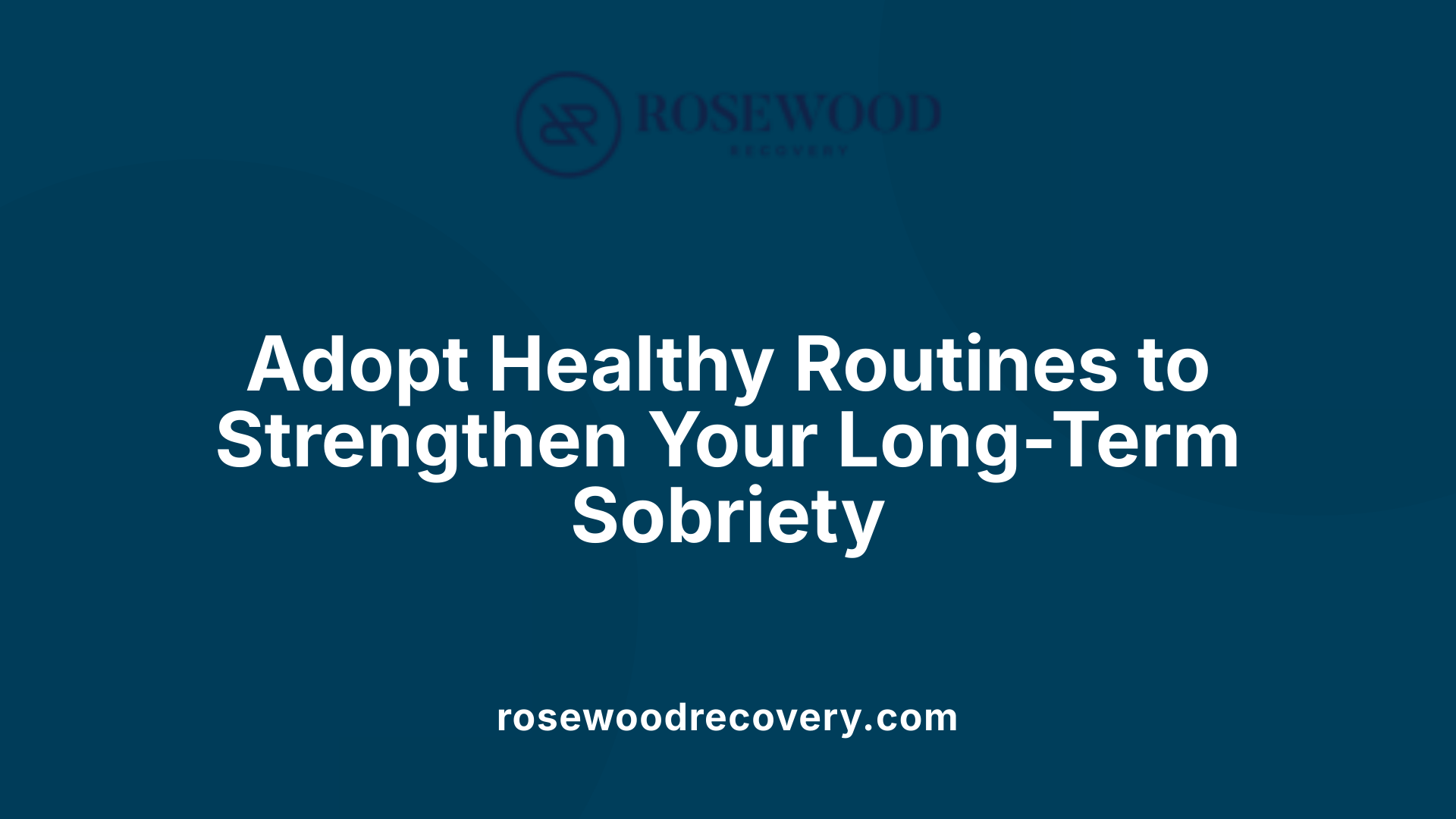
What lifestyle changes support long-term sobriety?
Supporting long-term sobriety involves establishing and maintaining healthy routines that foster both physical and mental well-being. Regular exercise is a crucial component, as it helps reduce stress, improve mood, and increase energy levels. Engaging in activities like sports, walking, or yoga not only promotes health but also creates positive outlets for stress management.
Nutrition plays a vital role too. Eating a balanced diet rich in fruits, vegetables, lean proteins, and whole grains helps repair the body after substance abuse and supports overall health. Adequate sleep is equally important, as it aids emotional regulation and cognitive function, which are often affected during recovery.
Building a support system is essential. Participation in peer groups such as Alcoholics Anonymous (AA) or Narcotics Anonymous (NA), alongside ongoing therapy with mental health professionals, provides accountability and a platform for sharing experiences. Maintaining positive relationships with family and friends who advocate sobriety offers additional emotional stability.
Stress management techniques like mindfulness meditation, deep breathing exercises, and relaxation practices help manage triggers related to emotional distress or environmental cues. Developing healthy ways to cope with stress reduces the risk of relapse, especially during challenging moments.
Pursuing personal interests, hobbies, or community service can significantly enhance one's sense of purpose and fulfillment. Activities such as volunteering, creative arts, or continuing education help fill the gap that substance use might have previously occupied.
Creating a structured environment with consistent daily routines—setting specific times for waking up, meals, exercise, and rest—helps reinforce stability. Developing a relapse prevention plan that includes recognizing personal triggers and implementing coping strategies adds an extra layer of resilience.
In summary, adopting a holistic approach that combines physical health, emotional support, stress management, and meaningful engagement lays a strong foundation for enduring sobriety and overall well-being.
Handling Challenges and Recognizing Triggers

What triggers do individuals recovering from addiction need to be aware of?
Recovering individuals should be alert to common triggers like emotional distress, environmental cues, social situations, and stress. Emotional triggers such as feelings of loneliness, anxiety, or boredom can intensify cravings.
Environmental cues include places or objects associated with past substance use, like certain neighborhoods, bars, or parties.
Social situations, especially those involving friends or family who still use substances, pose significant challenges.
Stress remains one of the most common triggers, capable of undermining even the most dedicated recovery efforts.
How can one develop strategies to handle these challenges?
Effective coping techniques are crucial for managing triggers. Mindfulness practices, including meditation and breathing exercises, help individuals stay present and reduce impulsive reactions.
Deep breathing exercises can calm the nervous system during moments of heightened emotion or stress.
Journaling allows individuals to identify specific triggers and develop personalized responses. By tracking situations and emotions that provoke cravings, they can implement targeted avoidance or response strategies.
Building a solid support network comprising support groups, trusted mentors, or therapists provides ongoing encouragement and accountability in handling challenges.
Practicing gratitude, challenging negative thoughts, and engaging in healthy routines build resilience, making it easier to withstand temptations.
What steps should be included in a relapse prevention plan?
A comprehensive relapse prevention plan should contain clear, actionable steps to follow when cravings occur.
Firstly, recognizing early warning signs—such as negative thinking, isolation, or obsessive thoughts—is essential.
Next, having a list of coping mechanisms like calling a support person, practicing mindfulness, or engaging in a healthy activity can distract from cravings.
Maintaining regular participation in support groups or therapy sessions reinforces coping skills and provides emotional stability.
Planning ahead for high-risk situations and establishing boundaries—such as avoiding certain social events or environments—is vital.
Lastly, setting up an emergency contact list ensures immediate support is available if cravings become overwhelming.
By proactively designing this plan, individuals are better prepared for moments of vulnerability, promoting longer-term sobriety and resilience against relapse.
Developing Effective Coping Skills for Long-Term Recovery
What are effective methods for developing coping skills to sustain recovery?
Building resilience and maintaining sobriety over the long term requires an array of well-developed coping strategies. Engaging in therapy plays a crucial role. Cognitive Behavioral Therapy (CBT), for example, helps individuals identify and challenge negative thoughts that can lead to relapse.
Mindfulness practices are also highly effective. Techniques such as meditation, deep breathing exercises, and body scans foster emotional regulation, decrease stress, and diminish cravings. These exercises teach individuals to stay centered and manage overwhelming feelings without resorting to substances.
Creating a strong support network is vital. Friends, family, peer groups, mentors, and recovery communities provide emotional reinforcement and accountability. Regular interactions with these networks can boost motivation and serve as a safety net during challenging times.
Practicing stress management techniques is another cornerstone. Regular physical activity, proper sleep, balanced nutrition, and engaging in hobbies help keep stress levels in check. Avoiding high-risk situations or environments associated with past substance use is equally important to prevent triggers.
Developing self-awareness is essential for early relapse prevention. Recognizing signs such as emotional distress, physical symptoms, or mental cravings enables proactive intervention.
In sum, effective coping includes a combination of therapeutic approaches like CBT, mindfulness, stress reduction, and a supportive community. Putting these strategies into practice supports sustained recovery and overall mental health.
Utilizing Resources for Ongoing Support and Community Engagement
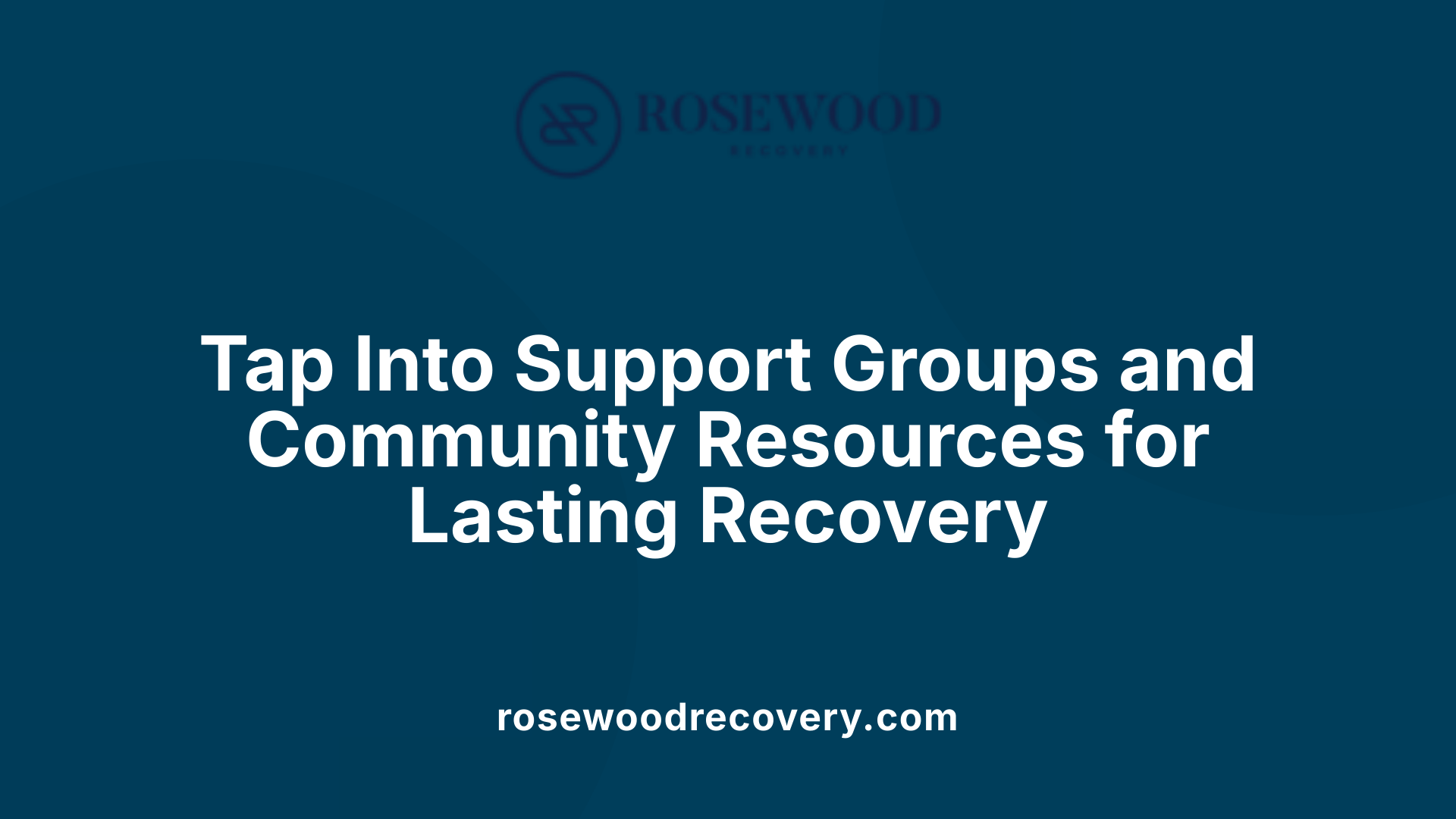
What resources are available for ongoing support and community involvement?
Recovering from addiction is a lifelong journey that benefits greatly from continuous support and active community participation. A variety of resources are accessible to help individuals maintain sobriety and foster a sense of belonging.
Support groups such as Alcoholics Anonymous (AA), Narcotics Anonymous (NA), and secular alternatives offer peer support, shared experiences, and accountability. These meetings provide a safe space to discuss challenges and celebrate milestones, helping members stay motivated.
Online platforms and helplines, including SAMHSA’s National Helpline, offer confidential, 24/7 treatment referrals, information, and emotional support in multiple languages. These tools connect individuals to local treatment centers, community-based organizations, and support networks.
Community engagement extends to volunteer opportunities, community service, and sober activities. Volunteering not only helps others but also reinforces a sense of purpose and self-worth. Participating in sober sports, arts, education classes, or wellness projects can promote healthy routines and new social connections.
State-specific resources, like the California Community Resource Guide, provide directories of services tailored to diverse populations, including youth, seniors, and underserved communities. These directories list initiatives such as advisory boards, participatory events, and support programs.
Further, newsletters, surveys, and social media groups contribute to ongoing community involvement, providing feedback channels and fostering an inclusive environment. Engaging with these resources helps individuals build a durable support system beyond formal treatment.
In summary, combining peer support groups, community activities, online resources, and volunteer work creates a comprehensive network that sustains sobriety, encourages growth, and nurtures a resilient recovery community.
Planning Your Long-Term Recovery Strategy
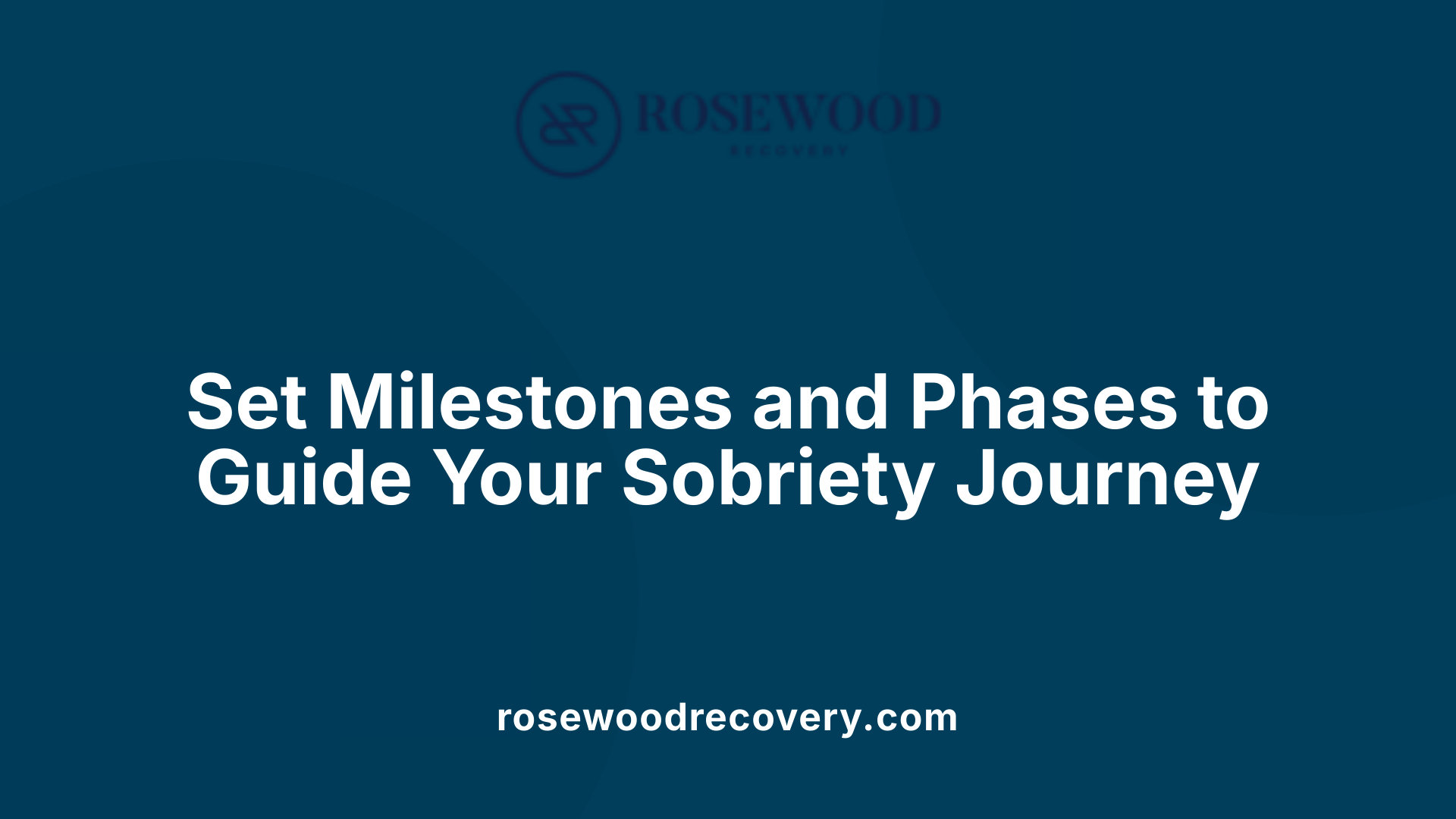
What are the typical milestones and recovery phases in sobriety?
Achieving and maintaining sobriety involves navigating through various milestones and stages that mark progress and reinforce commitment. Initially, many individuals focus on completing detox and early recovery efforts. A significant milestone is reaching 30 days sober, often celebrated with tokens or recognition that help boost motivation.
As sobriety continues, milestones such as 6 months and 1 year are celebrated more publicly with sobriety chips or coins, symbolizing substantial progress. These achievements serve as tangible proof of commitment and help reinforce the importance of ongoing effort.
Recovery phases can be viewed in stages, starting with precontemplation, where acknowledgment of the need for change is emerging. This advances into contemplation, preparation, and action, during which individuals develop coping skills, join support groups, and establish routines.
Long-term stability involves maintaining these routines, rebuilding relationships, and engaging in personal growth activities. It requires ongoing support, continual learning, and sometimes helping others in recovery.
Generally, the recovery journey progresses through five key stages:
| Stage | Focus | Support Needs | Typical Activities |
|---|---|---|---|
| Precontemplation | Recognizing problem | Basic education | Reflecting on behaviors, seeking information |
| Contemplation | Considering change | Counseling, motivational support | Exploring options, emotional acceptance |
| Preparation | Planning change | Goal setting, planning | Developing action plans, signing up for programs |
| Action | Implementing change | Active involvement | Support groups, therapy, lifestyle adjustments |
| Maintenance | Sustaining sobriety | Relapse prevention, community | Ongoing therapy, building new habits |
Celebrating each milestone is vital. Whether it’s a personal reflection or a public recognition, these achievements help sustain motivation and continue the momentum of recovery. Over time, maintaining sobriety becomes a lifelong commitment involving dedication, community involvement, and self-care.
In essence, those in recovery are encouraged to set specific, achievable goals, track progress through milestones, and develop a supportive environment conducive to long-term success. This approach fosters resilience, personal fulfillment, and a balanced life beyond initial abstinence.
Creating a Supportive Environment and Building Meaningful Relationships
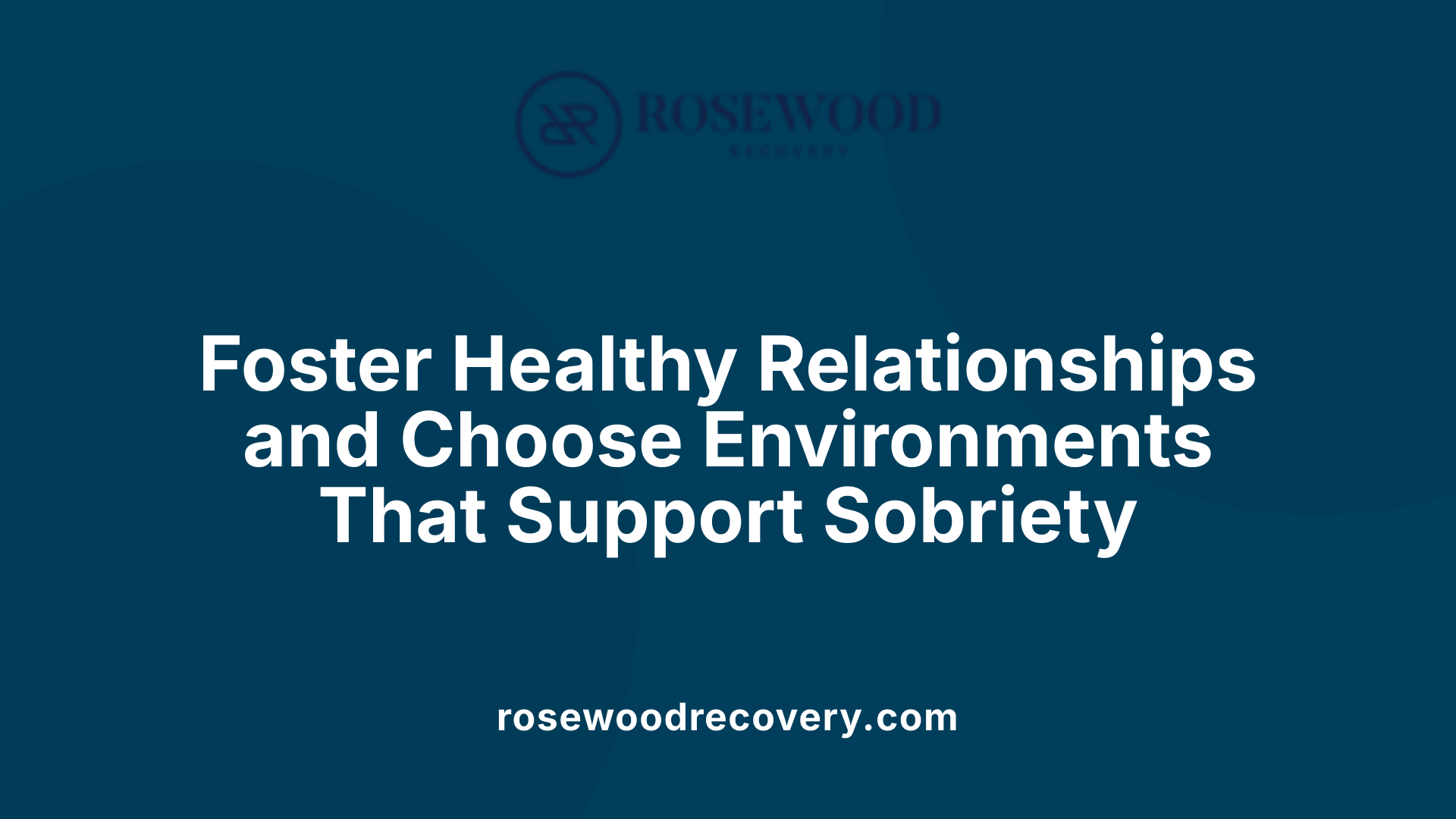 Choosing the right living situation after rehab plays a significant role in sustaining sobriety. Many individuals consider living at home, especially if their environment is stable and free from substance-related triggers. However, if the home environment is not conducive to recovery—due to ongoing temptations, unsupportive family members, or exposure to old routines—considering sober living homes can be a beneficial alternative.
Choosing the right living situation after rehab plays a significant role in sustaining sobriety. Many individuals consider living at home, especially if their environment is stable and free from substance-related triggers. However, if the home environment is not conducive to recovery—due to ongoing temptations, unsupportive family members, or exposure to old routines—considering sober living homes can be a beneficial alternative.
Sober living homes provide a structured, drug- and alcohol-free environment that fosters accountability, community involvement, and personal responsibility. These homes often have rules that promote consistent routines, participation in support groups, and employment or education pursuits. Living in such an environment reduces exposure to triggers and helps build healthy habits, which are crucial for long-term sobriety.
A supportive environment minimizes relapse risk by offering stability and encouragement. It helps individuals focus on their recovery, develop relationships based on shared goals, and practice new skills without the temptation of substance use.
Rebuilding trust and improving communication are vital for strengthening relationships with loved ones. Addiction often strains family bonds, leading to feelings of betrayal and distance. Therapy sessions involving family members can facilitate open communication, help repair damaged relationships, and foster mutual understanding and support.
Family involvement in recovery activities, such as joint counseling sessions and family support groups, enhances accountability and provides a network of emotional backing. Such engagement helps loved ones learn about addiction, emotional triggers, and ways to support ongoing sobriety.
Effective relapse prevention hinges on creating a safe, encouraging environment where individuals feel supported in their journey. Regular participation in support groups, therapy, and community activities not only reinforces positive habits but also expands social networks.
In summary, choosing an environment—whether at home or in sober living homes—that offers structure, support, and trust is essential. Rebuilding communication and trust within personal relationships further strengthens recovery and helps prevent setbacks, paving the way for a healthier, sober future.
A Lifelong Commitment to Sobriety
Achieving and maintaining sobriety after outpatient rehab is a multifaceted journey that extends well beyond formal treatment. It involves cultivating a supportive environment, developing resilient coping skills, adhering to structured routines, and engaging actively with community resources. Recognizing and managing triggers, celebrating milestones, and seeking ongoing professional and peer support are vital for long-term success. Remember, sobriety is a lifelong commitment—each step, no matter how small, reinforces your dedication to a healthier, substance-free life. With perseverance, support, and a personalized recovery plan, you can build a sustainable, fulfilling life rooted in sobriety.
References
- National Helpline for Mental Health, Drug, Alcohol Issues - SAMHSA
- How Do I Stay Sober After Rehab? - Addiction Center
- Where to Live After Rehab Ends: Rehab Aftercare Options
- Strategies for Maintaining Long-Term Sobriety from Alcohol -
- Adjusting to Life After Rehab - Roaring Brook Recovery Center
- How to Stay Sober After Rehab: 7 Tips to Aid Your Recovery
- How to Maintain Your Sobriety - Diamond House Detox
More Articles
Recovery Begins Here
Click below to get in touch and schedule a consult call with our team to begin your journey towards happiness and freedom.
Rosewood Recovery does not discrimate against any person because of the race, color, religious creed, ancestry, age, sex, sexual orientation, gender identity, national origin, handicap or disability or the use of a guide or support animal because of the blindness, deafness or physical handicap.



.jpeg)
.jpeg)
